Let me know how to get these sponges? I have been researching and it looks like most of the live rock places don't do that anymore....View attachment 32386778
Often sand will get a thin layer of some kind of nuisance algae on it. Stirring the sand will hide it some but often as it propagates it can get pretty annoying for some. Instead of disturbing most of the sand bed and biology just siphoning off the thin top layer and cleaning it as mentioned can take care of the issue without disturbing the deeper sand bed.
I wouldn't do a lighted refugium, macroalga and corals are competing with each other and macros can dump stuff into the water that can affect corals negatively in several ways. A cryptic refugium with just rubble and cryptic sponges can be very beenficial as cryptic sponges can remove stuff from the water much faster than bacterioplankton and convert some of it into stuff corals can use.
Here's some links you might find interesting:
"Coral Reefs in the Microbial Seas" This video compliments Rohwer's book of the same title (Paper back is ~$20, Kindle is ~$10), both deal with the conflicting roles of the different types of DOC in reef ecosystems. While there is overlap bewteen his book and the video both have information not covered by the other and together give a broader view of the complex relationships found in reef ecosystems
Changing Seas - Mysterious Microbes
Microbial view of Coral Decline
Nitrogen cycling in hte coral holobiont
BActeria and Sponges
Maintenance of Coral Reef Health (refferences at the end)
Maintenance of Coral Reef Health
Optical Feedback Loop in Colorful Coral Bleaching
Optical Feedback Loop in Colorful Coral Bleaching / Curr. Biol., May 21, 2020 (Vol. 30, Issue 13)
DNA Sequencing and the Reef Tank Microbiome
Aquabiomics: DNA Sequencing and the Reef Tank Microbiome
Richard Ross What's up with phosphate"
What's up with phosphate? by Richard Ross | MACNA 2014
You are using an out of date browser. It may not display this or other websites correctly.
You should upgrade or use an alternative browser.
You should upgrade or use an alternative browser.
Moved tank and now have parameter issues
- Thread starter af4evr13
- Start date
I was going to ask the same thing myselfLet me know how to get these sponges? I have been researching and it looks like most of the live rock places don't do that anymore....
These threads may help (I didn’t read them all) -

 forums.reefcentral.com
forums.reefcentral.com

 forums.reefcentral.com
forums.reefcentral.com
Perhaps, it’s something that can easily be achieved by getting a piece or two of aquacultured rock…I know I’ve got lots of sponges growing in my tank, though none I’d classify as cryptic per se.

Cryptic Sponge & Sea Squirt Filtration Methodology
I just finished reading Steve Tyree's book on this subject and would like to get some other people's impressions of the system he proposes. First let me say that I think he may have "rushed" the book out without substantial data to support any of his conclusions. You can see the progression of...

anyone using TYREE's "TRIzonal" (cryptic) filtration method ???
he has some beautiful limited edition corals available on his website (reeffarmers.com)... corals housed in systems employing his "trizonal" methods and has written a book about using cryptic filtration (CMAT Volume 1 Cryptic Sponge and Sea Squirt Filtration)... using sponges etc is supposed to...
Perhaps, it’s something that can easily be achieved by getting a piece or two of aquacultured rock…I know I’ve got lots of sponges growing in my tank, though none I’d classify as cryptic per se.
Based on what I have read it does look like that is the best way at this time. I only have one store in my area that can get aquacultured rock....all others buy the rock online and seed it. Now when we originally discussed as a refugium...I would add the rock into the fuge and then work to grow from there correct? Instead of doing Macro algae.These threads may help (I didn’t read them all) -

Cryptic Sponge & Sea Squirt Filtration Methodology
I just finished reading Steve Tyree's book on this subject and would like to get some other people's impressions of the system he proposes. First let me say that I think he may have "rushed" the book out without substantial data to support any of his conclusions. You can see the progression of...forums.reefcentral.com

anyone using TYREE's "TRIzonal" (cryptic) filtration method ???
he has some beautiful limited edition corals available on his website (reeffarmers.com)... corals housed in systems employing his "trizonal" methods and has written a book about using cryptic filtration (CMAT Volume 1 Cryptic Sponge and Sea Squirt Filtration)... using sponges etc is supposed to...forums.reefcentral.com
Perhaps, it’s something that can easily be achieved by getting a piece or two of aquacultured rock…I know I’ve got lots of sponges growing in my tank, though none I’d classify as cryptic per se.
Looks to be working. I checked my PH this AM and it was 8.2! My PH is never that high.Disclaimer: I am not currently using external air. I'm in the research stages myself
But, from everything I've read, as long as the ID of the airline tubing your using is large enough, yes, the skimmer will create enough vacuum to pull the air through the line. Of course, the shorter the length of the airline, the better from what I've been able to determine.
Let me know how to get these sponges? I have been researching and it looks like most of the live rock places don't do that anymore....
I was going to ask the same thing myself
If you're patient cryptic sponges will show up sooner or later, they're pretty much ubiquitous to reef systems. You might look on the back sides of some of the rocks in your system, you may already have some. Cryptic sponges can be brightly colored or almost clear. They can be large thick growths or just thin films. Below is some of the research on them if your interested in reading more about what they do. They are a double edged sword though. On one hand they remove the labile DOC that can cause so many problems with corals 1000X faster than the bacterioplankton (only partially removed by skimmers) but on hte other hand they can work with the various alga in reef ecosystems to shift the equilibrium to an algae dominate ecosystem. Keep in mind we still know very little about sponges and there are certainly going to be species specific differences and new discoveries. There is one black encrusting sponge to avoid that can be a serious issue as it loves light and will grow over and encrust corals and polyps.
WHen I get maricultrured live rock there's always some cryptic sponges on some of it. Tyree used to sell sponge backages but I haven't seen anything in a long while so I son't know if he still does. Last option would be other aquarists and I've seen frag plugs with sponges growing on the undersides.
Element cycling on tropical coral reefs.
This is Jasper de Geoij's ground breaking research on reef sponge finding some species process labile DOC 1000X faster than bacterioplankton. (The introduction is in Dutch but the content is in English.)
Sponge symbionts and the marine P cycle
Phosphorus sequestration in the form of polyphosphate by microbial symbionts in marine sponges
Differential recycling of coral and algal dissolved organic matter via the sponge loop.
Sponges treat DOC from algae differently than DOC from corals
A Vicious Circle? Altered Carbon and Nutrient Cycling May Explain the Low Resilience of Caribbean Coral Reefs

A Vicious Circle? Altered Carbon and Nutrient Cycling May Explain the Low Resilience of Caribbean Coral Reefs
Coral reefs are economically important ecosystems that have suffered unprecedented losses of corals in the recent past. Why have Caribbean reefs in particu
Surviving in a Marine Desert The Sponge Loop Retains Resources Within Coral Reefs
Dissolved organic carbon and nitrogen are quickly processed by sponges and released back into the reef food web in hours as carbon and nitrogen rich detritus.
Natural Diet of Coral-Excavating Sponges Consists Mainly of Dissolved Organic Carbon (DOC)
Natural Diet of Coral-Excavating Sponges Consists Mainly of Dissolved Organic Carbon (DOC) - PMC
Coral-excavating sponges are the most important bioeroders on Caribbean reefs and increase in abundance throughout the region. This increase is commonly attributed to a concomitant increase in food availability due to eutrophication and pollution. ...
The Role of Marine Sponges in Carbon and Nitrogen Cycles of COral Reefs and Nearshore Environments.
The role of marine sponges in carbon and nitrogen cycles of coral reef and nearshore environments - ProQuest
Explore millions of resources from scholarly journals, books, newspapers, videos and more, on the ProQuest Platform.
I bought some from him last year.Tyree used to sell sponge backages but I haven't seen anything in a long while so I son't know if he still does.
I bought some from him last year.
That's really good to hear!
Update, I have been able to bring all my parameters into range for a Mixed Coral Reef! With one exception....my Phosphate level is higher than I want it at .1 P04. I do tend to have to clean algae quite a bit. What can I do to help bring that down....this is the last thing I need to balance to start adding my coral.
Glad to hear it’s coming into balance. Phosphate may come down on its own. .1 honestly isn’t terrible
Don't worry about Nitrate . I suppose you do have a good protein skimmer ? What kind of protein skimmer do you have? You can super enhance what the skimmer is able to take out (Organics), by using an oxidizer, namely Potassium permanganate (KMnO4). You do want to bring the KH up to at least 8 (8 to 12 ), you can use baking soda, which is only one of the carbonates in sea water ( best to use a Marine Buffer) with more necessary Carbonates , Bromates, etc.. A KH of 8-12 will usually automatically give a pH of 8.3. Corals would rather use ammonium for their Nitrogen requirements (You can use amino-acids ; , however, out over a REAL CORAL REEF, is there any one out there squirting in amino-acids???) , . Corals have to expend extra energy Reducing nitrate , before they can use it ; as ammonium can be easily used (oxidized) by corals to build amino acids, then on to proteins, then on to tissues. You might want to read what 369Augold has to say . ( New reef chemistry forum). Also, we never stack rock directly on top of sand ("Tank crash " can happen when rock is sitting directly on sand (Hard for sand crew or vacuuming to be done, detritus keeps building up and a few years later...crash!) ; we put it on a flat rock platform 2 to 3 inches off the bottom glass, and install a circulation pump at one end and aim it under the rock platform to keep virtually ALL detritus suspended in the water column to eventually get sucked into the filter system: we have not had to " Vacuum " our tanks in YEARS!Hey guys, some questions on issues I am having with my tank. About 2 months ago I moved a tank that had been established for 4 plus years. I was able to move all my fish and zoa ....live rock with no loss. So was very excited about that. I did however end up replacing about 60 percent of my water of a 90 gallon tank and also removed some of my live rock to create a better rockscape for future coral. I have been doing quite a few water changes and cannot get my nitrates below 20 ppm and struggling to get my PH over 8. I have done quite a few substrate cleaning with a vac and almost always get quite a bit of detrius as well as my filter sock will turn brown in about a week after cleaning. Alkalinity is also low at 6.5 and will probably start trying to dose with baking soda to raise it. All other parameters are in good shape and my fish etc all seem to be doing pretty good but I know to add coral I have to have better parameters. Something is off I am just not sure what it is....looking for any thoughts on what I need to tweak here. thank you!
Last edited:
At .1 mg/l PO4 I wouldn't worry about it, it's in hte range corals see in the wild. FWIW .03 mg/l is the minimum, .2 is what corals are exposed to with upwelling, .5 mg/l may be acceptable acceptable and even .9mg/l might not be an issue and at the beginning of his presentation in this video RIch Ross talks a little bit about his acro dominate system sitting at 1.8 mg/l. I would on the other hand try to keep nitrates low as there is a mountain of research showing nittrates are not good for corals. I'm well aware some have kept corals at very high nitrate levels but just because some have been successful at acclimating cotrals to high levels doesn't mean it good for them.
Here's fig. 3 from this paper reviewing almost 4 dozen previosu research papers
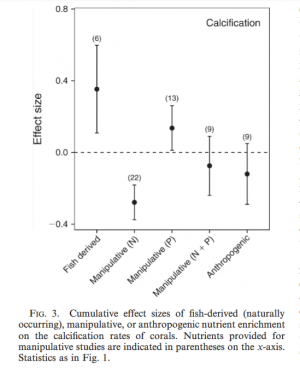
Sorry for the data bomb but here's some additional links on phosphorus and nitrogen if you're interested:
Nitrogen Stuff
Ammonium Uptake by Symbiotic and Aposymbiotic Reef Corals
 www.ingentaconnect.com
www.ingentaconnect.com
Amino acids a source of nitrogen for corals

 journals.biologists.com
journals.biologists.com
Urea a source of nitrogen for corals
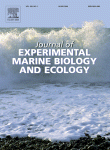
 www.sciencedirect.com
www.sciencedirect.com
Diazotrpophs a source of nitrogen for corals

 pubmed.ncbi.nlm.nih.gov
pubmed.ncbi.nlm.nih.gov
Context Dependant Effects of Nutrient Loading on the Coral-Algal Mutualism
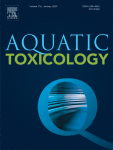
 www.sciencedirect.com
www.sciencedirect.com
Phospahte Stuff
ttps://www.cambridge.org/core/journals/journal-of-the-marine-biological-association-of-the-united-kingdom/article/an-experimental-mesocosm-for-longterm-studies-of-reef-corals/AFB1CF4CB68823BD13AD254623FD3C7C#
An Experimental Mesocosm for Longterm Studies of Reef Corals
Phosphate Deficiency:
Nutrient enrichment can increase the susceptibility of reef corals to bleaching:
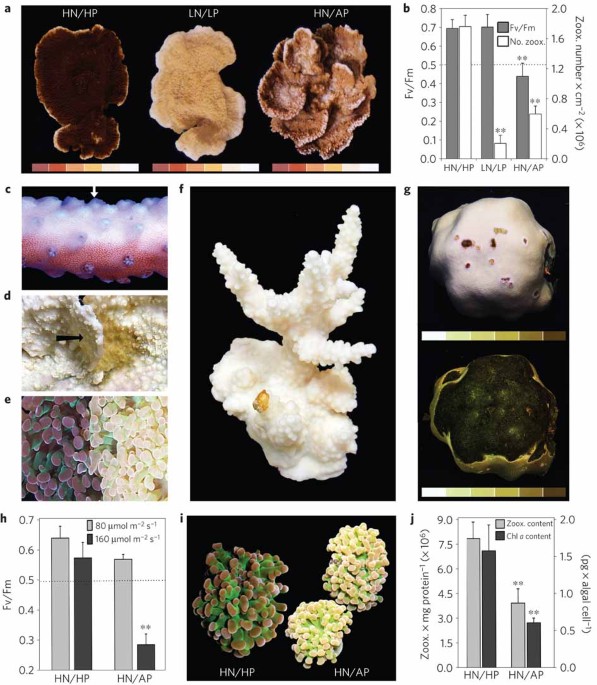
 www.nature.com
www.nature.com
Ultrastructural Biomarkers in Symbiotic Algae Reflect the Availability of Dissolved Inorganic Nutrients and Particulate Food to the Reef Coral Holobiont:
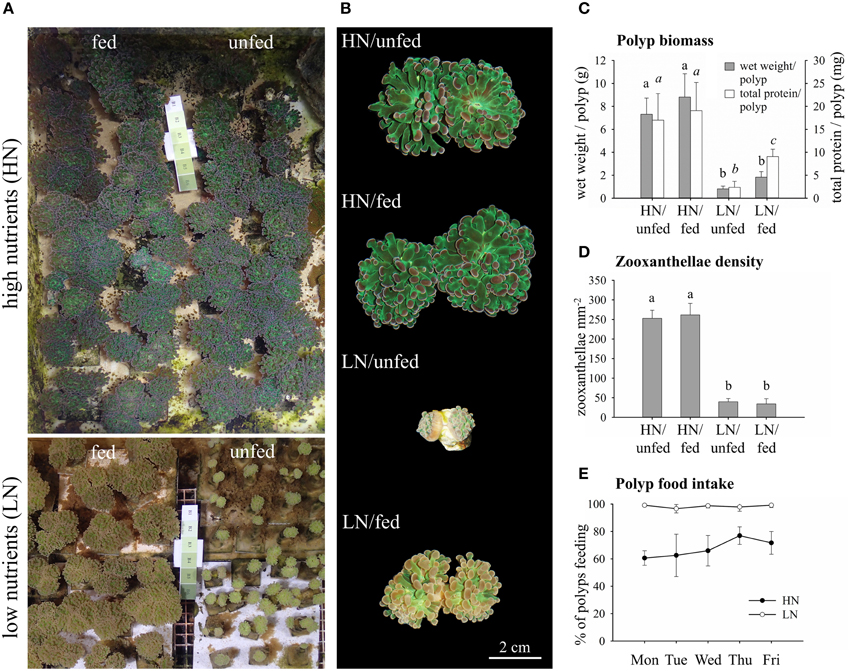
 www.frontiersin.org
www.frontiersin.org
Phosphate deficiency promotes coral bleaching and is reflected by the ultrastructure of symbiotic dinoflagellates

 www.sciencedirect.com
www.sciencedirect.com
Effects of phosphate on growth and skeletal density in the scleractinian coral Acropora muricata: A controlled experimental approach
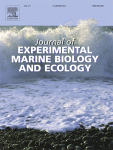
 www.sciencedirect.com
www.sciencedirect.com
High phosphate uptake requirements of the scleractinian coral Stylophora pistillata
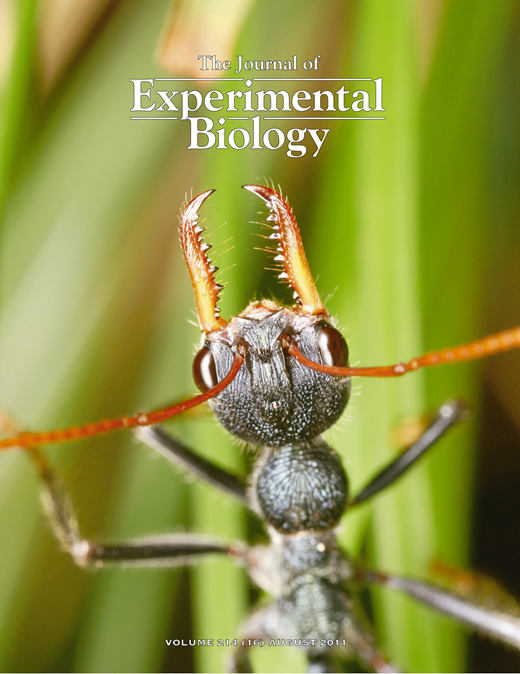
 jeb.biologists.org
jeb.biologists.org
Phosphorus metabolism of reef organisms with algal symbionts
Here's fig. 3 from this paper reviewing almost 4 dozen previosu research papers

Sorry for the data bomb but here's some additional links on phosphorus and nitrogen if you're interested:
Nitrogen Stuff
Ammonium Uptake by Symbiotic and Aposymbiotic Reef Corals
Ammonium Uptake by Symbiotic and Aposymbiotic Reef Corals: Ingenta Connect
Amino acids a source of nitrogen for corals

Uptake of dissolved free amino acids by the scleractinian coral Stylophora pistillata
SUMMARY. This study was designed to assess the importance of dissolved free amino acids (DFAA) as a nitrogen source for the scleractinian coral Stylophora pistillata. For this purpose, experiments were performed using 15N-enriched DFAAs, and %15N enrichment was measured both in animal tissue and...
Urea a source of nitrogen for corals

Urea uptake by the scleractinian coral Stylophora pistillata
Urea can be one of the major sources of nitrogen for phytoplankton, but little is known about its importance for corals. Experiments were therefore de…
Diazotrpophs a source of nitrogen for corals

Diazotrophs: a non-negligible source of nitrogen for the tropical coral Stylophora pistillata - PubMed
Corals are mixotrophs: they are able to fix inorganic carbon through the activity of their symbiotic dinoflagellates and to gain nitrogen from predation on plankton and uptake of dissolved organic and inorganic nutrients. They also live in close association with diverse diazotrophic communities...
Context Dependant Effects of Nutrient Loading on the Coral-Algal Mutualism

Elevated ammonium delays the impairment of the coral-dinoflagellate symbiosis during labile carbon pollution
Labile dissolved organic carbon (DOC) is a major pollutant in coastal marine environments affected by anthropogenic impacts, and may significantly con…
Phospahte Stuff
ttps://www.cambridge.org/core/journals/journal-of-the-marine-biological-association-of-the-united-kingdom/article/an-experimental-mesocosm-for-longterm-studies-of-reef-corals/AFB1CF4CB68823BD13AD254623FD3C7C#
An Experimental Mesocosm for Longterm Studies of Reef Corals
Phosphate Deficiency:
Nutrient enrichment can increase the susceptibility of reef corals to bleaching:

Nutrient enrichment can increase the susceptibility of reef corals to bleaching - Nature Climate Change
Increased dissolved inorganic nitrogen (DIN) concentrations in sea water have been linked to a reduction of the temperature threshold at which corals bleach, however, the mechanism underlying this change is not known. This phenomenon is now explained in terms of increased phosphatase activities...
Ultrastructural Biomarkers in Symbiotic Algae Reflect the Availability of Dissolved Inorganic Nutrients and Particulate Food to the Reef Coral Holobiont:

Frontiers | Ultrastructural Biomarkers in Symbiotic Algae Reflect the Availability of Dissolved Inorganic Nutrients and Particulate Food to the Reef Coral Holobiont
Reef building corals associated with symbiotic algae (zooxanthellae) can access environmental nutrients from different sources, most significantly via the up...
Phosphate deficiency promotes coral bleaching and is reflected by the ultrastructure of symbiotic dinoflagellates

Phosphate deficiency promotes coral bleaching and is reflected by the ultrastructure of symbiotic dinoflagellates
Enrichment of reef environments with dissolved inorganic nutrients is considered a major threat to the survival of corals living in symbiosis with din…
Effects of phosphate on growth and skeletal density in the scleractinian coral Acropora muricata: A controlled experimental approach

Effects of phosphate on growth and skeletal density in the scleractinian coral Acropora muricata: A controlled experimental approach
Phosphate contamination can negatively affect corals, modifying growth rates, skeletal density, reproduction, mortality, and zooxanthellae. We determi…
High phosphate uptake requirements of the scleractinian coral Stylophora pistillata

High phosphate uptake requirements of the scleractinian coral Stylophora pistillata
SUMMARYSeveral untested aspects of the regulation of inorganic nutrient uptake were examined using nutrient depletion experiments with the symbiotic coral Stylophora pistillata. The total inhibition of phosphate uptake in artificial seawater lacking sodium indicates the involvement of a...
Phosphorus metabolism of reef organisms with algal symbionts
We appreciate the information Tim. Thank you.Sorry for the data bomb
Agree, great information.We appreciate the information Tim. Thank you.
I think I am in a good place to add some coral now with my parameters. So I am going to list out what I have and then would love some ideas on coral that would do well in my tank. I currently have the following fish, inverts etc. 2 Clowns, 1 Tomi Tang, 1 Damsel, 1 Shrimp Goby, 1 Coral Beauty, 1 Huma Triggerfish, 1 fire shrimp, 2 Emerald crabs and a standard cleanup crew. 1 BTA. Some ZOA. I am also going to add more fish at some point but will make sure they are friendly and/or not mess with the coral I add.
What size tank is this again?I think I am in a good place to add some coral now with my parameters. So I am going to list out what I have and then would love some ideas on coral that would do well in my tank. I currently have the following fish, inverts etc. 2 Clowns, 1 Tomi Tang, 1 Damsel, 1 Shrimp Goby, 1 Coral Beauty, 1 Huma Triggerfish, 1 fire shrimp, 2 Emerald crabs and a standard cleanup crew. 1 BTA. Some ZOA. I am also going to add more fish at some point but will make sure they are friendly and/or not mess with the coral I add.
90 GallonWhat size tank is this again?
Similar threads
- Replies
- 17
- Views
- 3K
- Replies
- 8
- Views
- 1K
